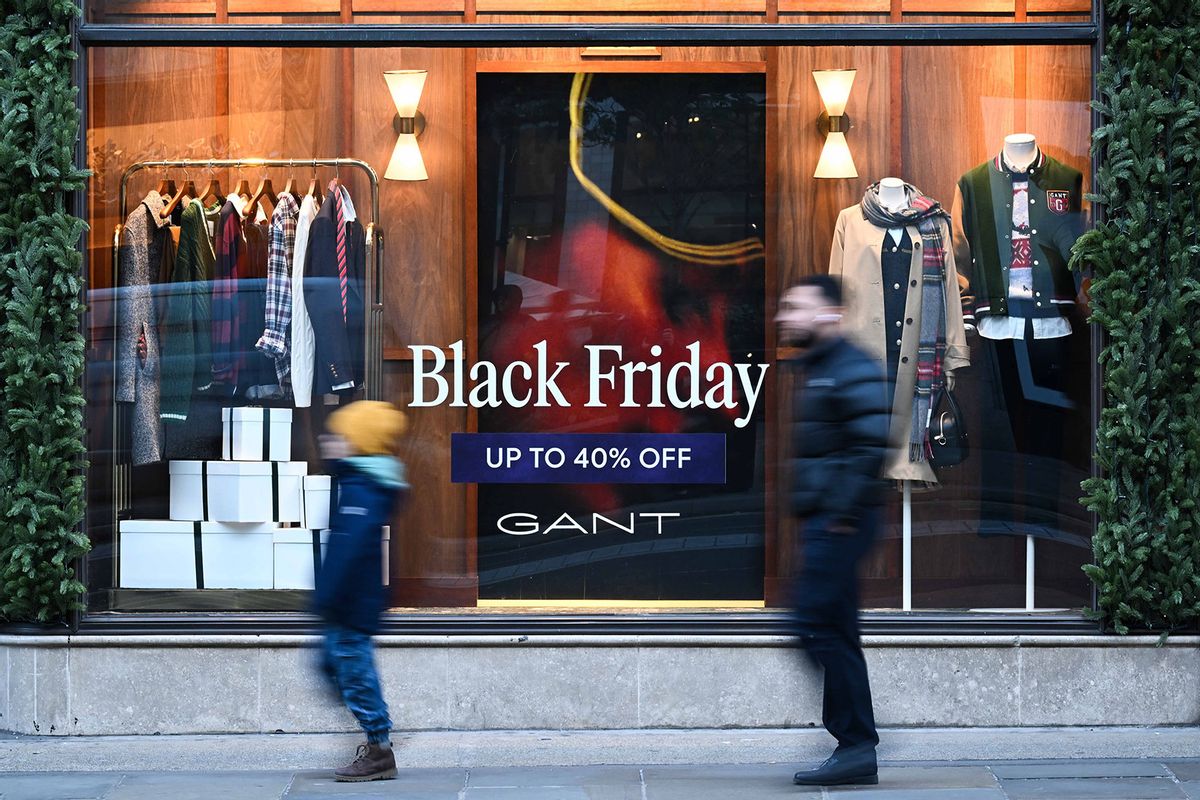Buoyed by an economy that has strengthened in recent months, consumers plan to spend more on gifts, food and seasonal items this year, according to recent forecasts. That would provide a boost to retailers, who report consumers are still bargain shopping as a result of inflation.
Holiday shoppers plan to spend an average of $1,778 this season — an 8% increase over last year’s intentions, according to a survey from consulting firm Deloitte. Most of this is expected to occur on major shopping days like Black Friday and Cyber Monday, when retailers typically offer their deepest discounts of the year.
Higher prices continue to weigh on budgets despite easing inflation. Many shoppers across income groups are adopting frugal strategies, such as switching brands, choosing more affordable retailers or opting for private-label and dupe products, said Brian McCarthy, principal in Deloitte’s retail strategy group.
Sales are surging at Walmart. The company on Tuesday reported a 5.3% growth last quarter compared with the same period last year, and its profit grew 8.2%. Walmart credited higher-income shoppers for the growth, with households making more than $100,000 a year accounting for 75% of the gains. About 60% of Walmart's sales come from groceries and household items.
That's the opposite of Target, which is expecting a weak holiday shopping season. The company said consumers strained by higher prices resulting from several years of inflation continue spending less on discretionary goods like home decor, electronics and clothing — the bulk of Target's sales. Target said sales during the final quarter of the year will be flat, and lowered its profit forecast. The company reported a sales increase of just 0.3% during its latest quarter.
The National Retail Federation predicts holiday spending in November and December will be between $979.5 billion and $989 billion, representing a 2.5% to 3.5% increase over 2023.
“The economy remains fundamentally healthy and continues to maintain its momentum heading into the final months of the year,” said Matthew Shay, president and CEO of the National Retail Federation. “The winter holidays are an important tradition to American families, and their capacity to spend will continue to be supported by a strong job market and wage growth.”
The economy grew by 2.8% in the third quarter compared to the same period last year, fueled by a 3.7% increase in consumer spending — the primary driver of economic growth, accounting for over two-thirds of the nation's GDP.
Despite a slowdown in job creation, with just 12,000 jobs added in October due to temporary disruptions from strikes and hurricanes, the labor market remains strong. The unemployment rate held steady at 4.1%.
We need your help to stay independent
More online shopping
Both physical and online retail sales are expected to grow, but online shopping is projected to increase at a faster pace, with an estimated growth rate of 10.1% from 2023, said Jitender Miglani, principal forecast analyst at research firm Forrester. This growth is fueled by the convenience of round-the-clock availability, a wide product selection, competitive pricing and the ease of comparing prices.
To maximize value and minimize stress, experts suggest the following:
- Plan ahead and shop early. Retailers launch holiday deals earlier every year. Make a list, compare prices, stick to a budget, and shop before popular items sell out. Take advantage of price matching policies to ensure the best deals.
- Join loyalty programs. Many programs offer early access to deals, free shipping and rewards that can be used for future purchases.
- Use price tracking apps. Apps can notify you when the price of a product drops.
- Leverage credit card perks. Some credit cards offer cash back, welcome bonuses and extra rewards through promotional links.
- Explore second-hand marketplaces. Many new items are listed at discounted prices after the holidays.
Tariffs could affect future spending
Presidential policy changes threaten to dampen the festive spirit in the years to come.
American consumers may tighten their belts further if the Trump administration imposes sweeping tariffs. Trump has proposed a 60% tariff on imports from China and a 10-20% tariff on imports from other countries.
“Retailers rely heavily on imported products and manufacturing components so that they can offer their consumers a variety of products at affordable prices,” said Jonathan Gold, NRF vice president of supply chain and customs policy. “A tariff is a tax paid by the U.S. importer, not a foreign country or the exporter. This tax ultimately comes out of consumers’ pockets through higher prices.”
Following Columbia Sportswear, Walmart is the latest retailer expressing likely price increases, as about one-third of the retailer’s items are subject to tariffs.
The loss in average disposable income from these price increases would be the equivalent of $1,900 to $7,600 per household
If implemented, tariffs could reduce American consumers' spending power by $46 billion to $78 billion annually, according to NRF estimates. For example, the price of a $50 pair of athletic shoes could rise to $59-$64, and a $40 toaster oven might cost $48-$52. Low-income families would feel the impact most acutely, facing higher costs on essential goods.
The loss in average disposable income from these price increases would be the equivalent of $1,900 to $7,600 per household, the Budget Lab at Yale estimated.
While some U.S. manufacturers may benefit from the tariffs, the gains to U.S. producers and the Treasury from tariff revenue do not outweigh overall losses to consumers, Gold said.
Read more
about personal finance



Shares